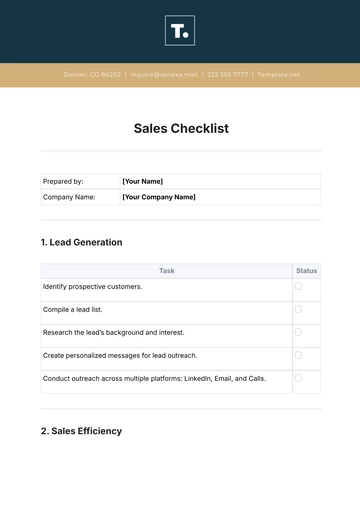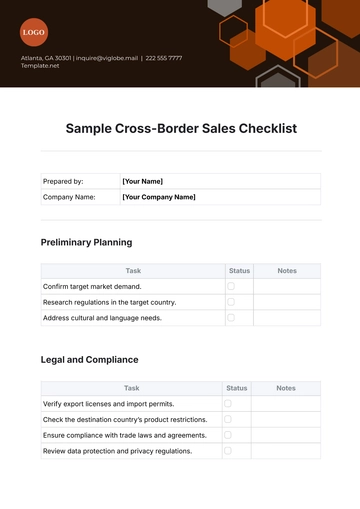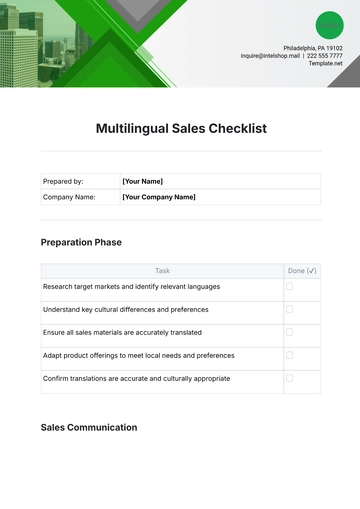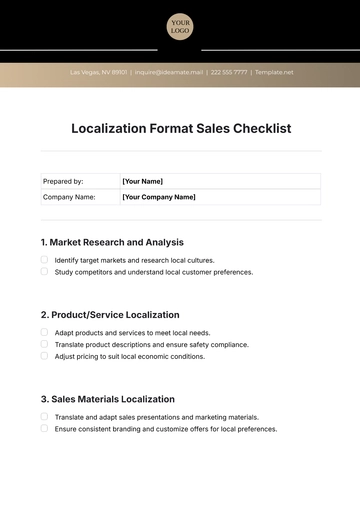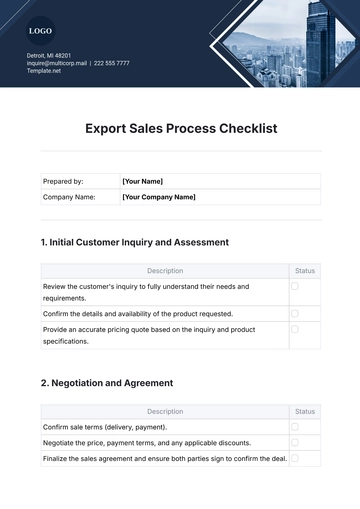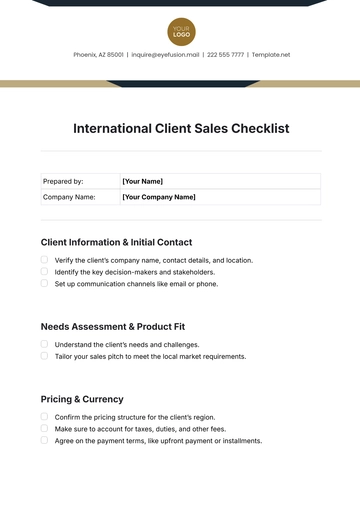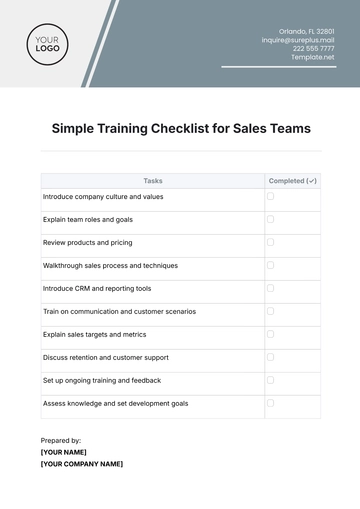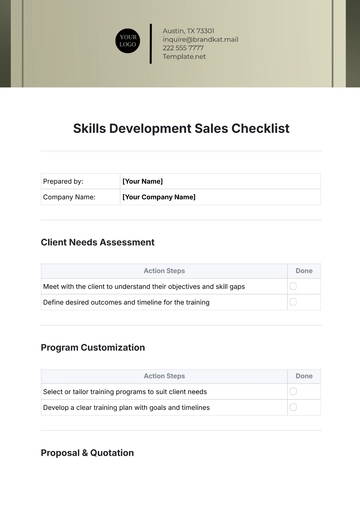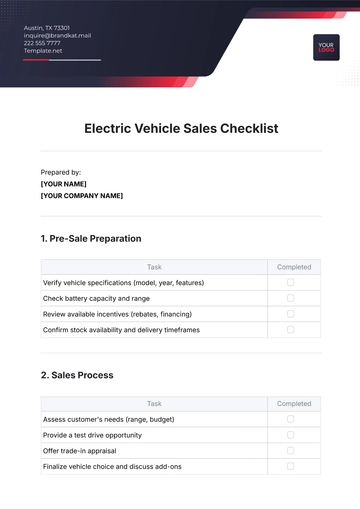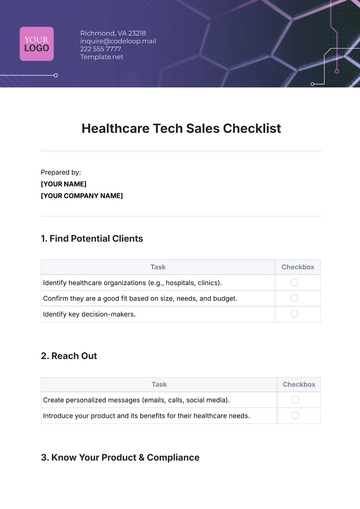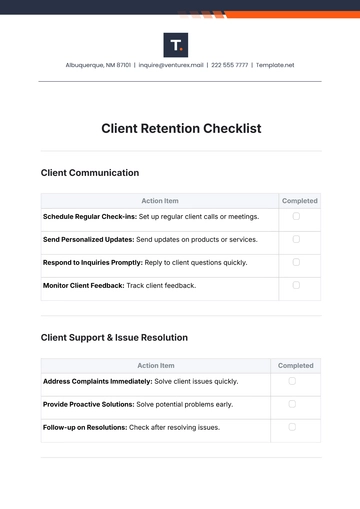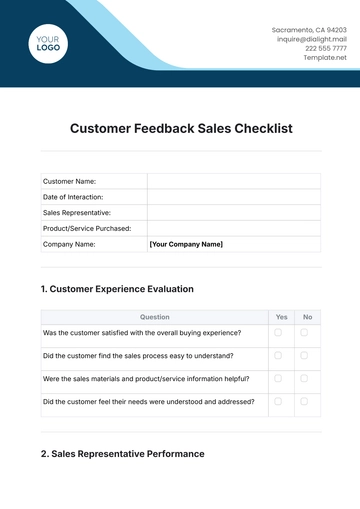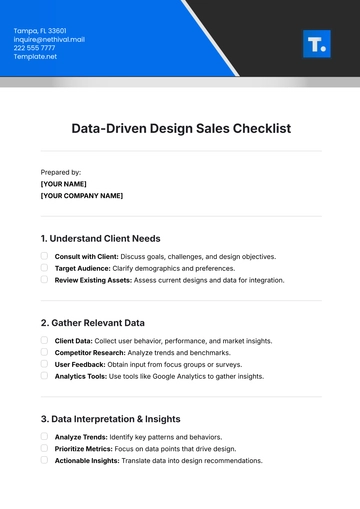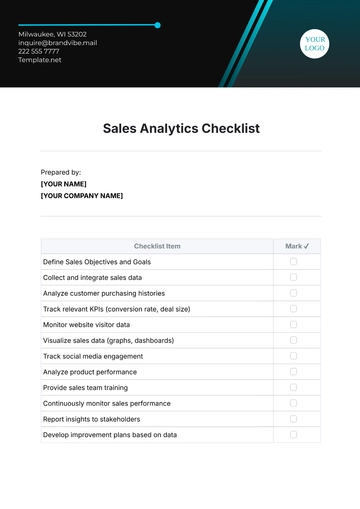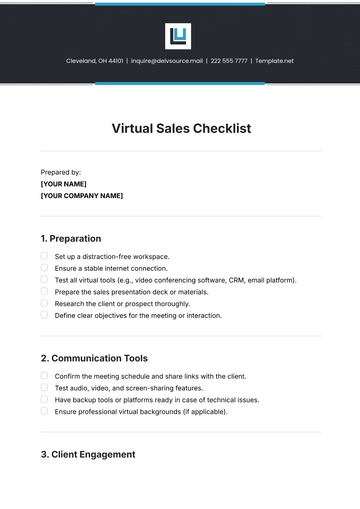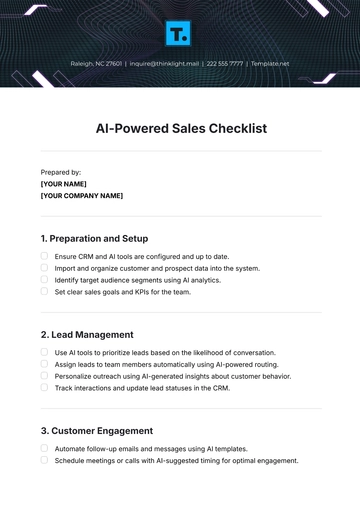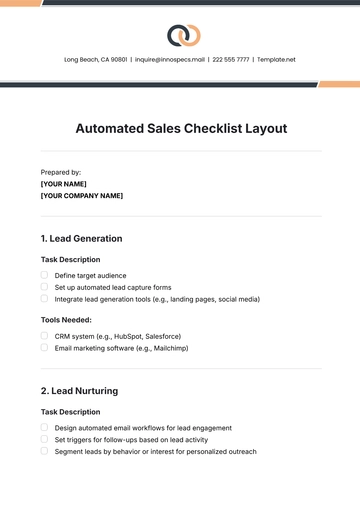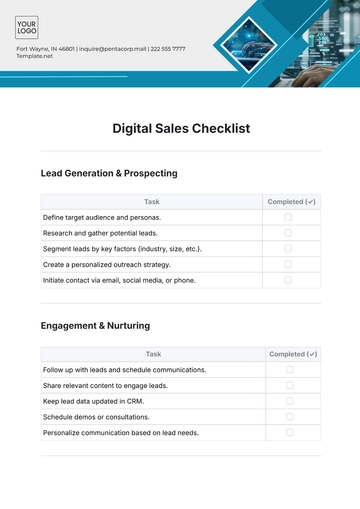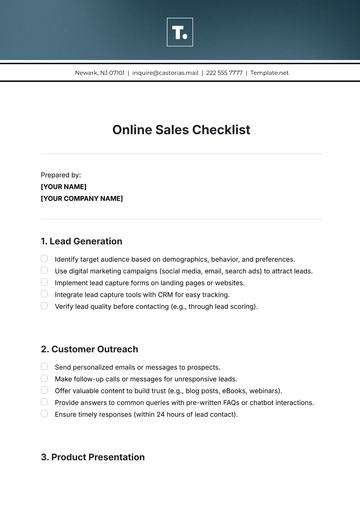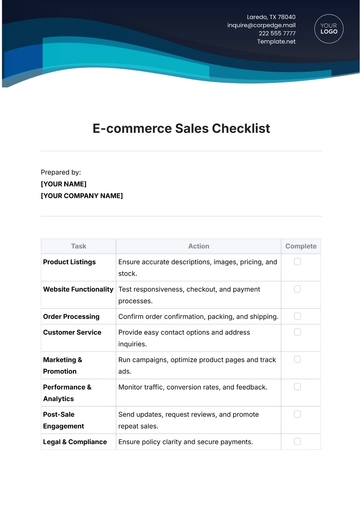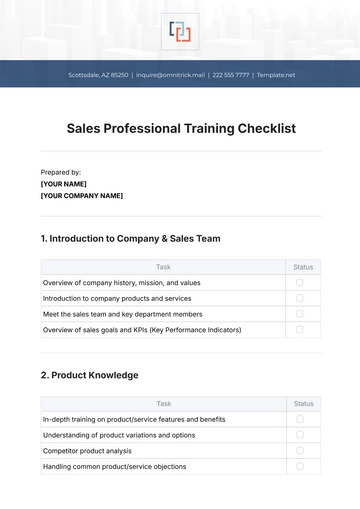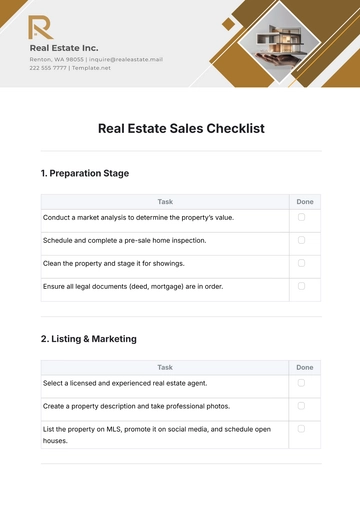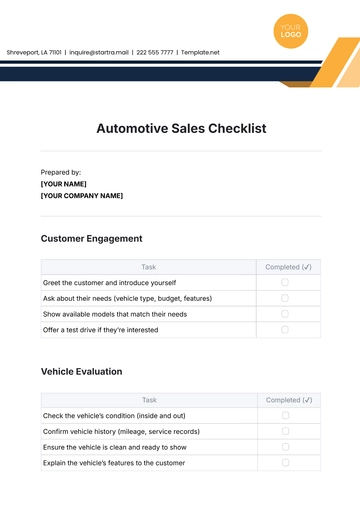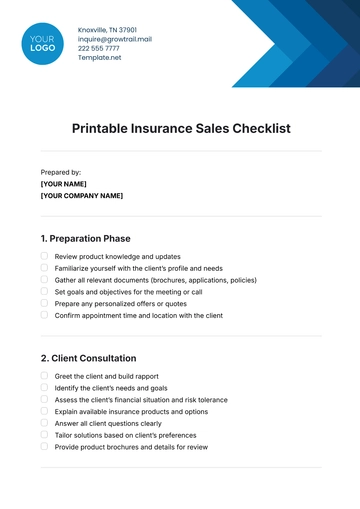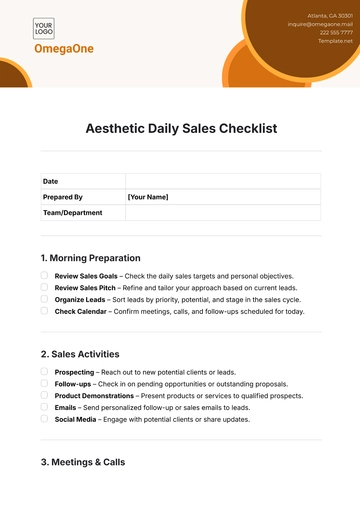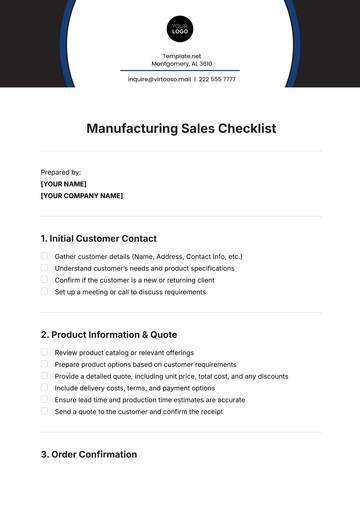Free Sales Lead Capture Strategy Checklist
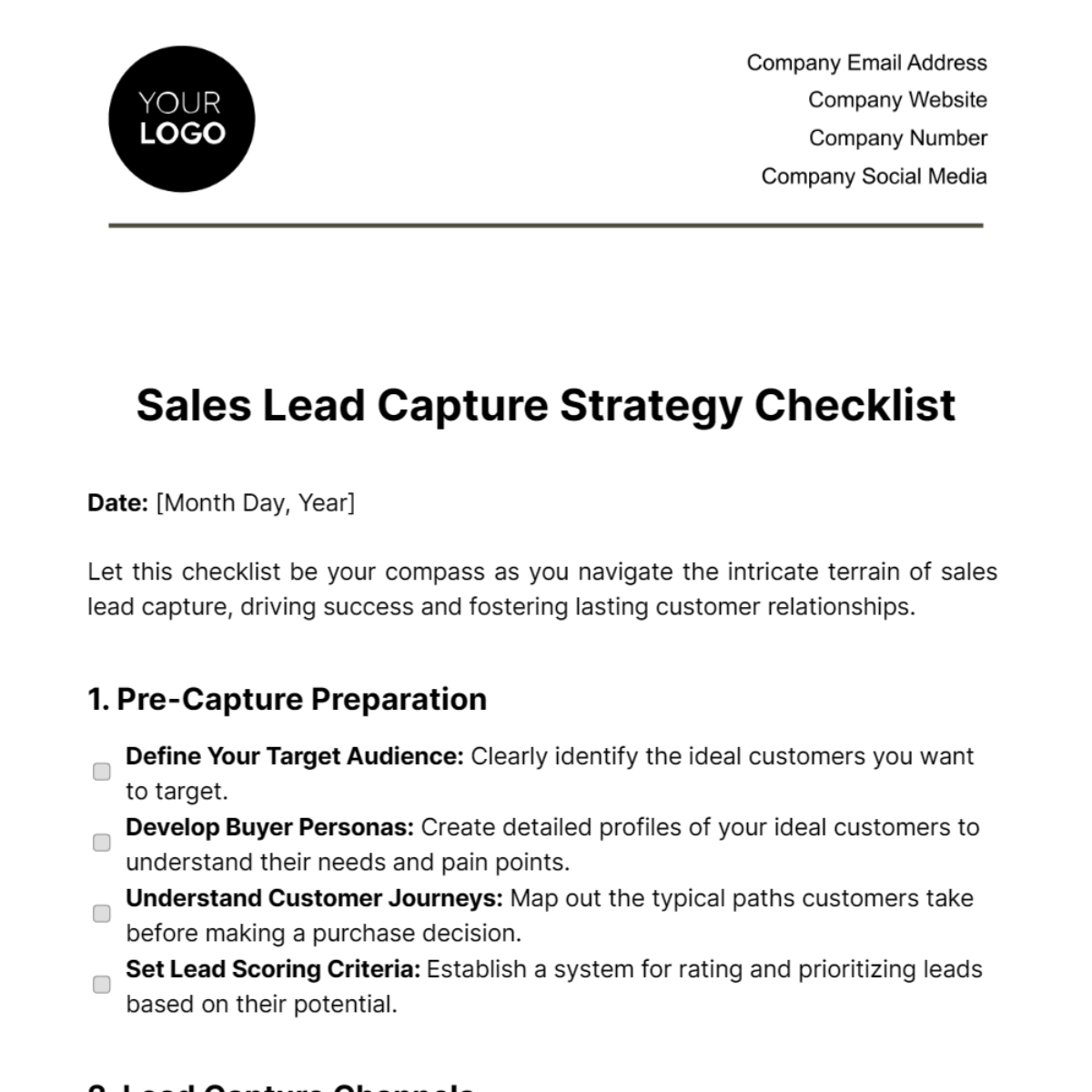
Date: [Month Day, Year]
Let this checklist be your compass as you navigate the intricate terrain of sales lead capture, driving success and fostering lasting customer relationships.
1. Pre-Capture Preparation
Define Your Target Audience: Clearly identify the ideal customers you want to target.
Develop Buyer Personas: Create detailed profiles of your ideal customers to understand their needs and pain points.
Understand Customer Journeys: Map out the typical paths customers take before making a purchase decision.
Set Lead Scoring Criteria: Establish a system for rating and prioritizing leads based on their potential.
2. Lead Capture Channels
Website Forms: Ensure your website has lead capture forms with compelling call-to-action (CTA) buttons.
Landing Pages: Create dedicated landing pages for specific campaigns or offers with clear value propositions.
Social Media: Implement lead capture features on your social media profiles and posts.
Email Marketing: Use lead capture forms in email campaigns and newsletters.
Events: Plan for lead capture at trade shows, webinars, and conferences.
Content Marketing: Embed lead capture forms in blog posts, ebooks, and other content.
3. Data Privacy and Compliance
Ensure GDPR/CCPA Compliance: If applicable, make sure your lead capture process complies with data privacy regulations.
Provide a Privacy Policy: Display a clear privacy policy to inform users how their data will be used.
4.Technology and Tools
CRM Integration: Ensure that captured leads are seamlessly integrated into your Customer Relationship Management (CRM) system.
Marketing Automation: Use marketing automation tools for lead nurturing and tracking.
Analytics: Set up analytics tools to monitor lead capture performance and website traffic.
5. Lead Capture Forms
Keep Forms Simple: Request only essential information on forms to reduce friction.
Mobile Optimization: Ensure forms are mobile-responsive for users on smartphones and tablets.
Clear CTA: Use compelling and action-oriented CTAs on forms and landing pages.
A/B Testing: Continuously test and optimize form design and copy.
6. Lead Qualification
Lead Scoring: Implement lead scoring based on predefined criteria to prioritize leads.
Segmentation: Segment leads into categories based on their interests or behavior.
Lead Verification: Verify lead information to ensure accuracy.
7. Response Time
Establish a Response Time Goal: Set a goal for how quickly leads should be contacted after submission.
Automate Lead Alerts: Use automation to receive real-time alerts for new leads.
8. Lead Nurturing
Develop a Nurturing Workflow: Create automated workflows for nurturing leads over time.
Personalization: Personalize follow-up communications based on lead interests.
Provide Valuable Content: Share relevant content to keep leads engaged.
9. Training
Team Training: Ensure your sales and marketing teams are trained to handle leads effectively.
Continuous Learning: Encourage ongoing learning about lead capture best practices.
10. Measurement and Analysis
Set KPIs: Define key performance indicators for lead capture and conversion.
Regular Reporting: Analyze and report on lead capture performance regularly.
Adjust Strategies: Use data insights to make necessary adjustments to your lead capture strategy.
- 100% Customizable, free editor
- Access 1 Million+ Templates, photo’s & graphics
- Download or share as a template
- Click and replace photos, graphics, text, backgrounds
- Resize, crop, AI write & more
- Access advanced editor
Get ahead in your sales game with Template.net's Sales Lead Capture Strategy Checklist Template. This editable and customizable resource, accessible through our Ai Editor Tool, streamlines your lead capture process. Maximize your efficiency and conversion rates with this comprehensive checklist, tailored to elevate your sales strategies effortlessly.
You may also like
- Cleaning Checklist
- Daily Checklist
- Travel Checklist
- Self Care Checklist
- Risk Assessment Checklist
- Onboarding Checklist
- Quality Checklist
- Compliance Checklist
- Audit Checklist
- Registry Checklist
- HR Checklist
- Restaurant Checklist
- Checklist Layout
- Creative Checklist
- Sales Checklist
- Construction Checklist
- Task Checklist
- Professional Checklist
- Hotel Checklist
- Employee Checklist
- Moving Checklist
- Marketing Checklist
- Accounting Checklist
- Camping Checklist
- Packing Checklist
- Real Estate Checklist
- Cleaning Checklist Service
- New Employee Checklist
- Food Checklist
- Home Inspection Checklist
- Advertising Checklist
- Event Checklist
- SEO Checklist
- Assessment Checklist
- Inspection Checklist
- Baby Registry Checklist
- Induction Checklist
- Employee Training Checklist
- Medical Checklist
- Safety Checklist
- Site Checklist
- Job Checklist
- Service Checklist
- Nanny Checklist
- Building Checklist
- Work Checklist
- Office Checklist
- Training Checklist
- Website Checklist
- IT and Software Checklist
- Performance Checklist
- Project Checklist
- Startup Checklist
- Education Checklist
- Home Checklist
- School Checklist
- Maintenance Checklist
- Planning Checklist
- Manager Checklist
- Wedding Checklist
- Vehicle Checklist
- Travel Agency Checklist
- Vehicle Inspection Checklist
- Interior Design Checklist
- Backpacking Checklist
- Business Checklist
- Legal Checklist
- Nursing Home Checklist
- Weekly Checklist
- Recruitment Checklist
- Salon Checklist
- Baby Checklist
- Equipment Checklist
- Trade Show Checklist
- Party Checklist
- Hospital Bag Checklist
- Evaluation Checklist
- Agency Checklist
- First Apartment Checklist
- Hiring Checklist
- Opening Checklist
- Small Business Checklist
- Rental Checklist
- College Dorm Checklist
- New Puppy Checklist
- University Checklist
- Building Maintenance Checklist
- Work From Home Checklist
- Student Checklist
- Application Checklist
